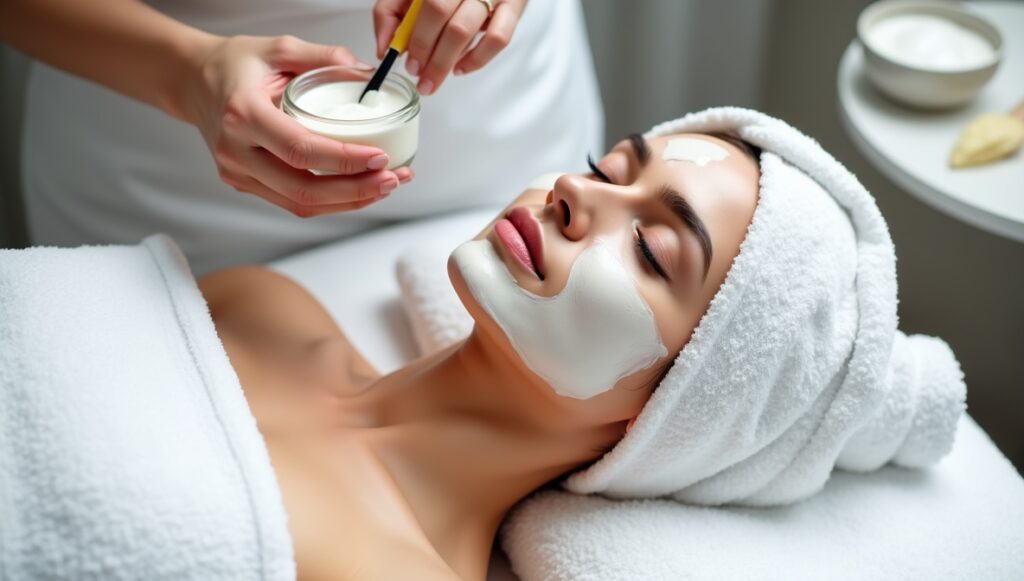The Truth About Cosmetology Diplomas: Your Complete Guide to Breaking Into the Beauty Industry
Let’s be real – when you’re dreaming about doing hair, makeup, or nails for a living, the last thing you want to think about is paperwork and diplomas. I get it. You’re probably itching to get your hands on some shears or a makeup palette, not sitting in a classroom. But here’s the deal: if you want to make real money in this industry (and not just do your cousin’s wedding makeup for free), you need to know the rules.
I’ve been in the beauty game for over a decade – from working the chair at high-end salons to now running my own successful studio. I’ve seen talented artists get shut down because they didn’t have their paperwork straight, and I’ve seen mediocre stylists book solid clients just because they played by the rules. Let me walk you through everything you need to know about diplomas and licensing so you can build the beauty career you actually want.
What Exactly is Cosmetology? (It’s Not Just Hair, Honey!)
Before we dive into diploma requirements, let’s clear up what cosmetology actually covers. Most people think it’s just haircuts and highlights, but the field is way bigger:
- Hair Services: Cutting, coloring, styling, extensions, chemical treatments
- Skincare: Facials, waxing, lash extensions, advanced treatments
- Nail Technology: Manicures, pedicures, acrylics, nail art
- Makeup Artistry: Bridal, editorial, special effects, airbrushing
Here’s the kicker – the rules are different for each specialty. That perfect smokey eye you can do in your sleep? Might not require a license. Those killer acrylic nails you do for your friends? Probably does. Let’s break it all down.
The Diploma Dilemma: Do You Really Need One?
High School Diploma vs. Cosmetology Diploma
First, let’s clarify two different diplomas we’re talking about:
- High School Diploma or GED – This is your basic education credential
- Cosmetology Diploma – This is what you earn from beauty school

The Hard Truth About High School Requirements
Most cosmetology schools won’t even let you in the door without a high school diploma or GED. Why? Because state licensing boards typically require it. I know, I know – it seems unfair if you’ve got natural talent. But here’s why it matters:
- Licensing exams often require reading comprehension at a high school level
- Running a successful beauty business requires basic math and communication skills
- It shows commitment (if you couldn’t finish high school, will you finish beauty school?)
But wait! There are some sneaky ways around this:
- Some schools accept “ability to benefit” tests instead of a diploma
- A few states allow apprenticeships without a high school credential
- Certain makeup-only programs might be more flexible
State-by-State Breakdown: Where You Can (and Can’t) Skirt the Rules
I’ve dug through the boring legal stuff so you don’t have to. Here’s the real deal on requirements across different states:
Strictest States (No Diploma, No Chance)
- California
- New York
- Texas
These states require both a high school diploma AND cosmetology school hours. No ifs, ands, or buts.
Middle-of-the-Road States
- Florida
- Georgia
- Illinois
The state might not require a diploma, but good luck finding a school that will accept you without one.
Most Flexible States
- Washington
- Oregon
- Pennsylvania
These places allow apprenticeship programs that might be more lenient about formal education.

Beauty School vs. Apprenticeship: Which Path is Right For You?
Traditional Beauty School
Pros:
- Structured learning environment
- Hands-on practice with mannequins before real clients
- Often includes business and marketing training
- Faster path to licensing in most states
Cons:
- Expensive (we’re talking $10k-$20k typically)
- Classroom time can feel tedious if you’re a hands-on learner
- Rigid schedules that might not work if you’re supporting yourself
Apprenticeship Route
Pros:
- Earn while you learn (usually minimum wage plus tips)
- Real-world experience from day one
- Often cheaper than beauty school
- More flexible scheduling
Cons:
- Harder to find (not all salons offer apprenticeships)
- Takes longer to get licensed (usually 2 years vs. 9-15 months)
- Quality varies wildly depending on your mentor
Pro Tip: I did both – beauty school first, then apprenticed under a master stylist. The combo gave me technical skills AND real-world savvy.
What If You’re Only Interested in One Thing? Specialized Licensing
Makeup Artists
Here’s some good news – in most states, if you’re ONLY doing makeup (no skin or hair services), you might not need a full cosmetology license. But:
- Some states require an esthetician license for makeup
- High-end jobs (like working for cosmetic brands) often want certification
- You’ll still need liability insurance to work professionally
Nail Technicians
Almost every state requires separate nail tech licensing, which typically means:
- 300-600 hours of training
- Passing a state board exam
- High school diploma or GED (in most cases)
Estheticians
Skin specialists need their own license, usually requiring:
- 600+ hours of training
- Separate state exams
- Diploma/GED requirements similar to cosmetology
The Financial Reality: Is Beauty School Worth It?
Let’s talk numbers because dreams don’t pay rent. The average cosmetology program costs between $10,000-$20,000. That’s a lot of facials and highlights! But consider:
Potential Earnings:
- Salon stylists: $25,000-$60,000 starting
- Master stylists: $75,000-$150,000+
- Salon owners: $100,000-$500,000+
Ways to Offset Costs:
- Federal financial aid (if your school is accredited)
- State grants for vocational training
- Salon-sponsored scholarships
- Part-time work in a salon while studying
My Experience: I took out loans for beauty school and paid them off in 3 years by working my tail off. Was it worth it? Absolutely. But I’ve seen others struggle because they didn’t have a financial plan.
Alternative Paths to Consider
If traditional cosmetology school isn’t in the cards right now, here are some other ways to break into the industry:
1. Start as a Salon Assistant
Many high-end salons will train promising assistants, even without formal education. You’ll shampoo hair, clean stations, and gradually learn the trade.
2. Specialize in One Service
Getting certified in just lash extensions or microblading requires less time/money than full cosmetology school.
3. Build a Portfolio First
If you’re doing makeup or hair styling for photoshoots (not chemical services), you can often build a clientele before getting licensed.
4. Work in Retail First
Cosmetic counter jobs at Sephora or MAC provide training and don’t always require licenses.
The Legal Risks of Working Without a License
I get it – rules are annoying. But before you decide to skip the diploma and licensing, consider:
- Fines: Up to $5,000 per violation in some states
- Cease and Desist Orders: Shutting down your business
- Liability Issues: No insurance coverage if something goes wrong
- Reputation Damage: Hard to recover from being “that unlicensed stylist”
True Story: I knew a talented braider who made great money under the table… until the state fined her $8,000 and banned her from getting licensed for 5 years.

How to Get Your Diploma If You Don’t Have One
If you’re missing that high school credential, here’s your game plan:
1. GED Programs
- Takes 3-6 months typically
- Costs $80-$150 for the full test
- Many community colleges offer prep classes
2. Adult High School Diploma
- Some school districts offer programs
- Often free for residents
- Takes about a year
3. Online High School Options
- Accredited programs exist
- Be wary of diploma mills
- Costs vary widely
Pro Tip: Many beauty schools partner with GED programs – ask about package deals!
The Bottom Line: Is a Diploma Necessary?
After all this, here’s the honest truth:
✅ For most cosmetology careers? Yes, you’ll need at least a high school diploma or GED.
✅ For certain specialties? Maybe not, but your opportunities will be limited.
✅ For long-term success? The paperwork opens doors to better jobs, higher pay, and legal protection.
If you’re serious about this career, view the diploma as your first client – something that might not be glamorous but is absolutely necessary.
FAQs from Aspiring Beauty Pros
1. Can I do hair extensions without a license?
In most states, absolutely not. Any service that alters hair (cuts, color, extensions) requires a cosmetology license.
2. How old do I need to be for cosmetology school?
Most programs require you to be at least 16, but licensing age is typically 17-18 depending on state.
3. Do I need chemistry knowledge for cosmetology?
Basic understanding helps (especially for colorists), but schools teach what you need to know.
4. Can I transfer my license if I move states?
Sometimes, but most states require additional training hours or testing. Always check reciprocity agreements.
5. What’s the fastest way to start earning in beauty?
Consider a nail tech program – they’re often shorter (3-6 months) and salons are always hiring.
Final Thoughts From Someone Who’s Been There
Look, I won’t sugarcoat it – getting your diploma and license is work. There will be days when memorizing state regulations feels ridiculous when all you want to do is create. But here’s what I’ve learned after 10+ years behind the chair:
The most successful beauty pros I know aren’t just talented – they’re professional. They understand that this is both an art AND a business. That piece of paper isn’t just bureaucratic nonsense – it’s proof that you’re serious about your craft.
So if you’re missing that diploma? Go get it. Stressed about beauty school costs? There are ways to make it work. Want to take shortcuts? I get it – but trust me, doing it right pays off in the long run.
The beauty industry can give you an amazing life – flexible hours, creative fulfillment, great money. But you’ve got to play the game to win. Now go get started – your future clients are waiting.









